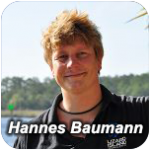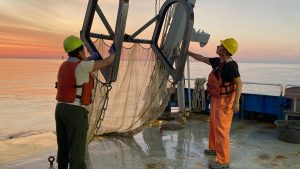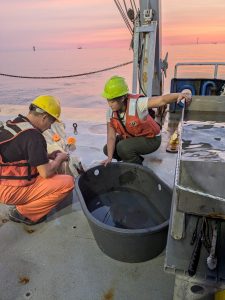
Hannes Baumann (Ph.D., University of Hamburg, Germany)
Associate Professor of Marine Sciences
Paola Batta-Lona (Ph.D., University of Connecticut)
Assistant Research Professor of Marine Sciences
Rationale
Sand lances are among the most important forage fishes on the Northwest Atlantic shelf, but their dynamic patchy distributions and reliance on coarse grain sand as substrate make them difficult to study. From previous work in the Baumann Lab it is clear that OSW lease areas offer exactly the type of sediment that sand lance rely on for juveniles to settle and to which planktonic larvae drift from diverse spawning grounds in the southern Gulf of Maine, the Great South Channel and even Georges Bank. Wind lease areas themselves might be spawning grounds for sand lance, but this is currently unknown.
Another important knowledge gap concerns species distribution, because two sand lance species occur in our waters, the more offshore Northern sand lance (Ammodytes dubius) and the more inshore American sand lance (A. americanus). Given their similarities, it is unknown whether larvae of only one or both species occur and potentially settle at OSW lease areas. This question has both important managerial consequences and scientific value.
Fall 2024 Updates


